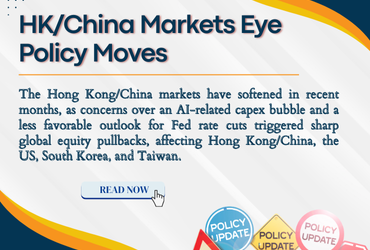
US Government Shutdown, Should You Be Worried?
A potential U.S. government shutdown would furlough hundreds of thousands of federal workers, disrupt services, and delay key data such as the jobs report. While such events create near-term uncertainty, history suggests their lasting economic and market impact is limited. The Congressional Budget Office estimates even the longest shutdown — 35 days in 2018–19 — only reduced GDP by 0.4%. Typically, weekly growth losses average about 0.15% when large numbers of workers are furloughed.
For markets, shutdowns have generally been absorbed without major damage. Since 1977, there have been 20 shutdowns averaging just 8 days. Short disruptions tend to cause muted reactions, while prolonged ones can spark volatility. The S&P 500 has often recovered strongly, with an average 12% gain in the 12 months after past shutdowns. Notably, equities rose more than 10% during the 2018–19 shutdown itself. Analysts stress shutdowns have never triggered a recession or a market crash.
That said, conditions today are more fragile. Inflation has been rising, job creation is weakening, and the labor market has suffered downward revisions. Fed Chair Jerome Powell recently highlighted the “challenging situation” of managing high inflation alongside slowing growth. A prolonged shutdown could therefore amplify existing risks, potentially leading to a market pullback as investors seek an excuse to take profits after this year’s strong rally (S&P +13%, Nasdaq +17%, Dow +9%).
Back home, we think market attention will be skewed towards the Budget 2026, which is going to be tabled on 10 October, and it is expected to carry few surprises, with most major reforms already undertaken. Focus will shift to fine-tuning policies and sustaining reform momentum in governance, wages, green transition, and competitiveness. Key measures could include details on a carbon tax, further subsidy rationalisation, housing policy shifts, labour reforms, and stronger political financing laws. Fiscal deficit is projected to narrow to around 3.4% of GDP in 2026F, aided by mild expenditure growth and past tax measures, while debt-to-GDP should ease to 63%, signalling steady consolidation.
Our thoughts: if you’re holding cash, consider deploying selectively; if you’re already fully invested, remain patient and stay the course.
Market Outlook
We remain constructive on the Malaysia market, supported by multiple tailwinds. Expectations of a Fed easing cycle from 4Q25 into 2026 should improve global liquidity and risk appetite across Asia. Domestically, fiscal reforms are largely priced in, while resilient macro fundamentals, robust consumption, and an expanding investment pipeline support growth. Structural transformation is reinforced by key national blueprints (13MP, NIMP 2030, NSS, NETR), while Malaysia’s ASEAN Chairmanship enhances its strategic relevance. Strong local institutional flows, a firmer ringgit, undemanding CY26 P/E of 13.9x, and record-low foreign shareholding of 18.8% further strengthen the market’s risk-reward profile.
The Fed has cut rates by 25bps to 4.00–4.25% amid labour market weakness, with market consensus expecting two more cuts, bringing the federal funds rate to 3.50–3.75% by year-end 2025. That said, future cuts remain data-dependent, in our view. US equities remain supported by strong technology earnings growth, though elevated valuations could limit upside. While concerns over a potential US government shutdown persist, markets have largely discounted the risk given its historically limited impact. Asia Pacific markets may benefit from improved liquidity, but global growth and policy uncertainties may weigh on sentiment. We recommend a barbell strategy through 2025, combining quality growth opportunities with defensive income assets to navigate potential volatility.
Phillip Capital Malaysia and our offerings
We reaffirm our belief that there are still opportunities in the market, and we maintain a discerning approach in choosing high-quality stocks for our portfolio. However, it is crucial to exercise caution and carefully select investment options to ensure the best risk-adjusted returns. By taking a vigilant and discerning approach, investors can potentially reap the benefits of the current market opportunities while minimising risks.
A noteworthy avenue for investors seeking diversification in their portfolio is through PhillipCapital Malaysia. PhillipCapital Malaysia offers multiple private mandate services managed by professional fund managers. By leveraging PhillipCapital Malaysia’s private mandate services, investors can enhance their resiliency, optimise portfolio performance, and navigate the complexities of the market with confidence.
We also offer both conventional and Shariah-compliant options to cater to the needs of all investors. For Malaysia’s mandates, we like:
- PMART/PMA Dividend Enhanced and/or PMART/PMA Dividend Enhanced ESG
Our PMART Dividend Enhanced and PMA Dividend Enhanced is an income-driven portfolio focused on high dividend-yielding equities. We apply the Dog of the Dow approach, screen and select top market cap stocks to minimise risk and ensure consistent performance. The portfolio is an equal weighting portfolio which reduces concentration risk and provides similar exposure to all clients, both initially and after rebalancing. We offer both conventional and Shariah investment options to cater to the diverse needs of our investors. Click here to learn more. We recently also introduced PMART/PMA Dividend Enhanced ESG Mandate as we remain dedicated to investing in ESG stocks given their stronger valuation and profitability.
- PMART/PMA ESG
Phillip Capital Malaysia offers discretionary portfolio that invests in stocks with high ESG ratings from the F4GBM and F4GBMS Indices, namely PMART and PMA ESG. There are both conventional and Shariah options available. To explore the companies in which both Conventional and Shariah ESG mandates invest, you can refer to the provided link.
- PMART/PMA Blue Chip and Opportunity
Our Blue-Chip portfolios primarily allocate our investments towards companies with large market capitalisations, while the Opportunity portfolios predominantly invest in companies with smaller market capitalisations. We also offer both conventional and Shariah-compliant options to cater to the needs of all investors.
Please click on the link to learn more or email us at cse.my@phillipcapital.com.my if you require any further information.
Disclaimer
The information contained herein does not constitute an offer, invitation, or solicitation to invest in any product or service offered by Phillip Capital Management Sdn Bhd (“PCM”). No part of this document may be reproduced or circulated without prior written consent from PCM. This is not a unit trust or collective investment scheme and is not an obligation of, deposit in, or guaranteed by PCM. All investments carry risks, including the potential loss of principal.
Performance figures presented may reflect model portfolios and may differ from actual client accounts’ performance. Variations in individual clients’ portfolios against model portfolios and between one client’s portfolio to another can arise due to multiple factors, including (but not limited to) higher relative brokerage costs for smaller portfolios, timing of capital injections or withdrawals, timing of purchases and sales, and mandate change (e.g., Shariah vs. conventional). These differences may impact overall performance.
Past performance is not necessarily indicative of future returns. The value of investments may rise or fall, and returns are not guaranteed. PCM has not considered your investment objectives, financial situation, or particular needs. You are advised to consult a licensed financial adviser before making any investment decisions.
While all reasonable care has been taken to ensure the accuracy and completeness of the information contained herein, no representation or warranty is made, and no liability is accepted for any loss arising directly or indirectly from reliance on this material. This publication has not been reviewed by the Securities Commission Malaysia.






